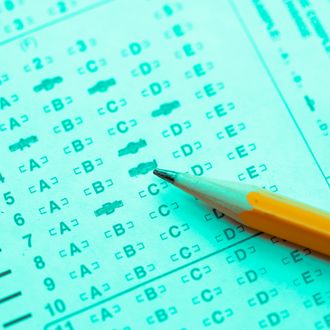
You have likely taken some version of the Myers–Briggs Type Indicator, whether required by your employer or while killing time on BuzzFeed or as something to include on your online dating profile. Since its inception toward the end of World War II, Myers–Briggs has become an instantly recognizable name, in regular use by a wide range of institutions despite being roundly debunked every so often.
All of this is why it’s so interesting that very little is known about Isabel Briggs Myers, the woman who, along with her mother, Katharine Briggs, authored the perennially popular personality test. In a long article over at Digg this week, writer Merve Emre details her nine-month quest to try to uncover the details of Myers’s biography. The short version: We still don’t know much about Myers, and Emre suspects this is probably intentional on the part of the Myers & Briggs Foundation.
Myers was an award-winning mystery novelist, who published one well-received book and wrote a second, less-than-well-received one. She had no training in either psychology or sociology (nor did her mother), but her take on personality draws from her mother’s study of the subject, which itself draws from Carl Jung’s 1923 tome Psychological Types. Myers’s mother made a career out of writing about psychology for popular magazines like Ladies Home Journal and The New Republic, the latter of which published an article of hers in 1926 titled “Meet Yourself: How to Use the Personality Paintbox,” which is something like a blueprint for what would later become the MBTI. Myers worked with her mother to develop the personality test in 1943, a time when the U.S. labor force was swelling and employers were desperate to find a way of neatly matching prospective employees to open positions, in hopes that this would help stem job turnover.
Beyond that, the facts of Myers’s personal history are closely guarded by her foundation, and Emre has a hunch as to why. Reading through Myers’s novels and her personal correspondence with the consultant who helped popularize the MBTI, she came across several instances of what she characterizes as casual or outright racism. For example, here’s Emre’s brief outline of the plot of Myers’s second mystery novel, Give Me Death: “One by one, members of a land-owning Southern family begin committing suicide when they are led to believe that ‘there is in [our] veins a strain of Negro blood.’” And here’s a snippet from a letter Myers wrote to management consultant Edward N. Hay:
When a female office worker advocated for human equality across all races and ethnicities, Isabel declared her to be immature and typologically under-developed. “The very warm evidence on the colored woman to whom one could talk exactly as to equals is another case in point,” she wrote. “Members of a dark and supposedly inferior race are standard symbol for the suppressed and considered-inferior part of one’s own psyche.”
Alas, by the end of the 9,000-word piece, we don’t know much more about Myers’s personal history than when we started, no doubt because the Center for Applications of Psychological Type — the for-profit research component of the Myers & Briggs Foundation — barred Emre from combing through Myers’s personal papers, which are archived at the University of Florida’s research library but require special permission from the foundation to peruse. The mystery of the mystery novelist turned personality typologist persists.




